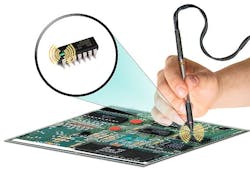Draper Lab takes aim at military counterfeit electronics in work on DARPA SHIELD program
ARLINGTON, Va., 6 Jan., 2015. Defense microelectronics experts at the Charles Stark Draper Laboratory in Cambridge, Mass., are developing new technologies to safeguard the U.S. military electronics supply chain from substandard used and counterfeit electronics.
Officials of the U.S. Defense Advanced Research projects Agency (DARPA) in Arlington, Va., announced $4.1 million contract to Draper Lab last week for the agency's Supply Chain Hardware Integrity for Electronics Defense (SHIELD) program.
Draper researchers will develop a tool to verify the trustworthiness of protected electronic components without disrupting or harming the system into which they have been designed.
Related: Senate committee turns up heat on counterfeit parts in the military
Used and counterfeit electronic components are widespread throughout the defense supply chain, DARPA officials say. Suspect electronic components present a critical risk in military systems where a malfunction of a single part could lead to system failures that can put warfighter lives and missions at risk.
DARPA researchers are asking Draper Lab to develop a 100-by-100-micron component, or dielet, that authenticates electronics components. The Draper-designed dielets will have encryption engines, sensors to detect tampering, and that affix to today’s electronic components such as microchips.
The SHIELD program's goal is to provide 100 percent assurance against recycled components that are sold as new; unlicensed overproduction of authorized components; test rejects and sub-standard components sold as high-quality; parts marked with falsely elevated reliability or newer date of manufacture; low-quality clones and copies that may include hidden functionality; and components that are covertly repackaged for unauthorized applications, DARPA officials say.
Related: EMS providers combat electronics counterfeiting with supply chain controls
"SHIELD demands a tool that costs less than a penny per unit, yet makes counterfeiting too expensive and technically difficult to do,” says Kerry Bernstein, the SHIELD program manager at DARPA.
"The dielet will be designed to be robust in operation, yet fragile in the face of tampering," Bernstein says. "What SHIELD is seeking is a very advanced piece of hardware that will offer an on-demand authentication method never before available to the supply chain."
Draper Lab experts will develop a dielet that can be inserted into the electronic component’s package at the manufacturing site or affixed to existing trusted components, without any alteration of the host component’s design or reliability.
Related: The scourge of high tech
Draper will design dielets with no electrical connections to the host component, such that authenticity testing can be done anywhere with a handheld or automated probes. After a scan, an inexpensive appliance like a smartphone will upload a serial number to a central, industry-owned server. The server sends an unencrypted challenge to the dielet, which sends back an encrypted answer and data from passive sensors—like light exposure—that could indicate tampering.
For more information contact the Charles Stark Draper Laboratory online at www.draper.com, or DARPA at www.darpa.mil.

